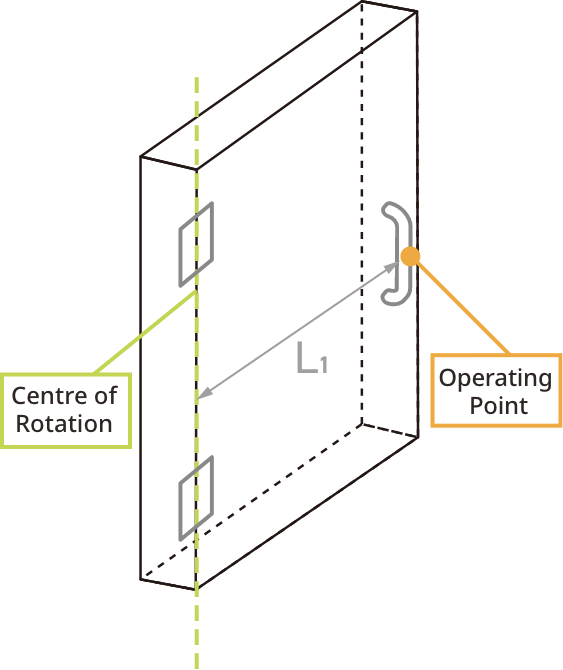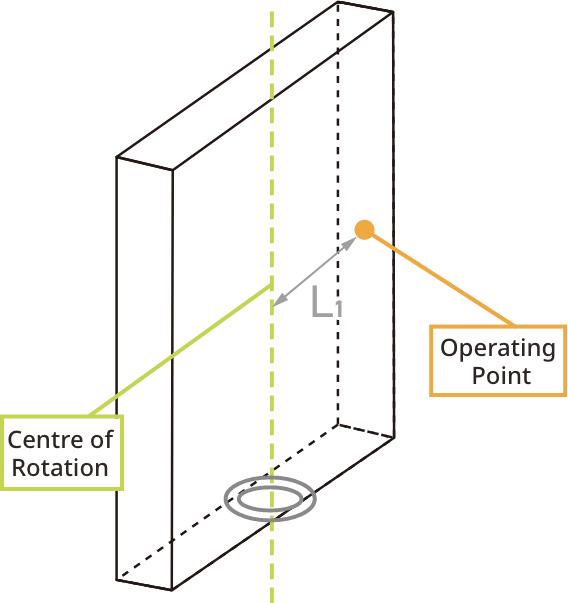The Basics of Torque Hinges
This page will introduce you to the basics of torque hinges: their mechanism,
different available types, and how to use them.
Try out our torque hinge selection tool when you are ready to choose.
What Is A Torque Hinge?
What Is A Torque Hinge?
A torque hinge, also known as a free stop hinge or friction hinge, is a type of hinge that allows doors, lids or covers to be securely held at any position or angle during opening and closing. They are able to stop securely at any position due to their free stop function.
Utilising torque hinges can enhance the usability of devices and equipment, adding further value.

Why Does It Stop Securely? - The Structure of a Torque Hinge
The axle of a torque hinge is constructed to utilise friction. Its free stop function is activated via the friction generated around the axle through the opening or closing of a door or lid (the object's rotational force).

Types of Torque Hinges

Disk Configuration
Friction is generated when fixed disks are inserted between movable disks and rotated.

Curl Configuration
Friction is generated by curling a leaf spring around an axle and rotating the axle.

Clip Configuration
Friction is generated by rotating an axle held in place with a clip.

Pipe Configuration
Rotating a shaft pressed into a plastic pipe.
The Benefits of Choosing Torque Hinges
Benefit01
More Efficient
Doors and covers stop through the force of the hinge, eliminating the need for a stopper.

Benefit02
Better Design
With no need for stays, interiors can be kept neater.

Benefit03
Safer
The hinge prevents covers from falling, ensuring safety.

Types of Torque Hinge
Torque Hinge Shapes
Tapping the image will switch the displayed view.

Butt Hinge / Lift-Off Hinge
The most standard shape.

Various Hinge
Distinguished by the shape of the main hinge part.

Insert-Type Hinge
Installed by insert moulding or press fitting. The hinge part is not visible from the outside.

Swivel Hinge | Multi-Axis Hinge
Free stops in various directions, allowing the hinge to tilt or swivel.

Concealed Hinge
The hinge is not visible from the front, so as not to subtract from the design of a frame.
Torque Hinges with Additional Features
We offer a variety of torque hinges that not only include a free stop function, but also offer added value.
One Way Torque Hinge
With this hinge, the free stop function operates in one direction only.
No torque is generated in the opposite direction, allowing for smooth operation.

Torque is not generated in the lifting direction

Torque is generated in the lifting direction
Adjustable Torque Hinge
torque value can be adjusted in response to a door's weight and operational feel. This allows torque to be adjusted to a uniform level in the event of variation, for better maintainability.


Detent Torque Hinge
This hinge prevents spring back, where doors or lids fail to close completely and bounce back due to the release of torque when closing. With no need for parts to keep the door in position, interiors can remain neater.


Lift-Assist Torque Hinge
Lift-assist torque allows lids or doors to be lifted with less effort than standard hinges.

Lift-assist torque for lighter operation

Operating force only
Use Cases and Application Examples
These hinges are ideal for adjusting the angle of machinery covers, monitors, and lighting fixtures.
They are used in various industries on medical devices, machine tools, vehicles, food equipment and more.

Medical Devices

Machine Tools

Vehicles

Food Equipment
Selecting Torque Hinges
Select products with a torque value that is suitable for the weight of the door.
torque value varies depending on the product.

0.45 N·m

4.0 N·m
Door Moment
What Is a Moment?
This refers to the action of a force rotating around a given point.
What Is Door Moment?
This refers to the force that rotates a door around a hinge. If the torque value of a hinge does not exceed the door moment, the door will not free stop.

Cover does not free stop
Torque Hinge's Torque Value
Door Moment

Cover free stops
Torque Hinge's Torque Value
Door Moment
Torque Hinge Tolerance
When selecting torque hinges, it is necessary to take into account the variation (tolerance) in their torque values.
For example, if a hinge with a torque value of 3N·m has a tolerance of ±20%, the lower limit of the torque value would be 20% less than 3N·m, equating to 2.4N·m. Supposing a door moment of 2.5N·m, there could be instances where the door does not free stop when swinging downwards.
For more detailed door moment calculations, please refer to The Basics of Centre of Gravity and Torque.
Solve complex moment calculations with our selection tool!
Also simulates operating force!
Use our MDT Selection Tool to choose products that suit your needs,
just by entering the distance to the centre of gravity and the mass of the lid.



